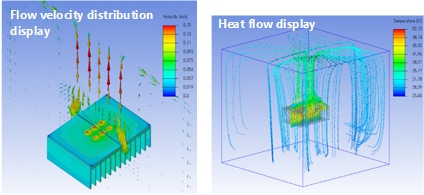- 半導體首頁
-
應用Automotive
Body Electronics
xEV
In-Vehicle Infotainment
Advanced Driver-Assistance Systems (ADAS)
Chassis
IndustrialInfrastructure
BEMS/HEMS
Factory Automation
Commercial Equipment
Consumer/PersonalIoT Equipment
Healthcare
Wearable Device
Mobile
Computer Peripherals
-
產品車用元件
Discrete Semiconductor
Diodes
電晶體
通用邏輯IC
Analog Devices
Digital Devices
Wireless Devices
※
: Products list (parametric search)
功率半導體※
: Products list (parametric search)
隔離器/固態繼電器Photocouplers
Digital Isolators
※
: Products list (parametric search)
MOSFETsIGBTs/IEGTs雙極性電晶體※
: Products list (parametric search)
Diodes※
: Products list (parametric search)
微控制器馬達驅動 ICs智能功率 ICs※
: Products list (parametric search)
電源管理 ICs線性 ICs※
: Products list (parametric search)
通用邏輯 ICs線性影像感測器其他產品其他產品
※
: Products list (parametric search)
-
開發/設計支援
開發 / 設計支援
-
技術知識
- 購買管道
- 型號 & 關鍵字搜尋
- 交叉搜尋
- 參數搜尋
- 線上庫存查詢跟購買
This webpage doesn't work with Internet Explorer. Please use the latest version of Google Chrome, Microsoft Edge, Mozilla Firefox or Safari.
型號需要超過三個文字以上 Search for multiple part numbers fromhere.
The information presented in this cross reference is based on TOSHIBA's selection criteria and should be treated as a suggestion only. Please carefully review the latest versions of all relevant information on the TOSHIBA products, including without limitation data sheets and validate all operating parameters of the TOSHIBA products to ensure that the suggested TOSHIBA products are truly compatible with your design and application.Please note that this cross reference is based on TOSHIBA's estimate of compatibility with other manufacturers' products, based on other manufacturers' published data, at the time the data was collected.TOSHIBA is not responsible for any incorrect or incomplete information. Information is subject to change at any time without notice.
型號需要超過三個文字以上
散熱模擬模型:對應於三維熱流分析的簡易CFD模型已經擴展到MOSFET產品
熱分析的重要性
近年來,隨著電子設備的小型化、高密度化、高環境溫度等嚴苛的使用條件,電子元件選用、配置、電路板的設計等方面產生了各種各樣的發熱問題。 因此,使用具有三種熱傳遞形式(熱傳導、熱對流和熱輻射)的散熱模型進行散熱設計的重要性與日俱增。
進行熱模擬需要外殼、電路板和安裝的組件的熱模型。東芝電子零組件(簡稱“東芝” ) 建立並發布針對MOSFET進行散熱摸擬的簡易CFD模型。該模型可以在熱流分析工具中使用,以可視化的形式呈現三維特性(溫度分佈和流速)。
關於簡易CFD模型
- CFD是Computational Fluid Dynamics的縮寫,在這裡CFD表示三維熱流體分析。
- 元件模型(CFD)簡化了影響到塊狀結構的散熱路徑的實際的元件外形的三維模型。 (請參閱圖1 的左側。 )
- 元件模型是根據材料屬性的一般值進行調整。 (請參閱圖1的右側。 )
- 檔案格式為ISO標準STEP格式,因此相容於許多3D CAD軟體,可用於各式各樣的熱流分析工具中。

關於簡易CFD模型的使用方法,請參閱Application note。
使用簡易CFD模型的分析範例

圖2顯示了由於MOSFET的損耗而產生熱量的模擬結果。隨著MOSFET 溫度升高,熱會擴散到電路板和散熱器。

圖3顯示了分析過程中腔體內的氣流速度和熱流動情況。並可檢查電路板周圍流體(空氣)的流速和流動路徑。
關於具有簡易CFD模型的MOSFET的列表,請參閱以下網頁。
相關信息

Thermal Management for Designs Using Discrete Semiconductor Devices
There are several effective ways to manage the high temperatures of today’s discrete semiconductors in your design.

